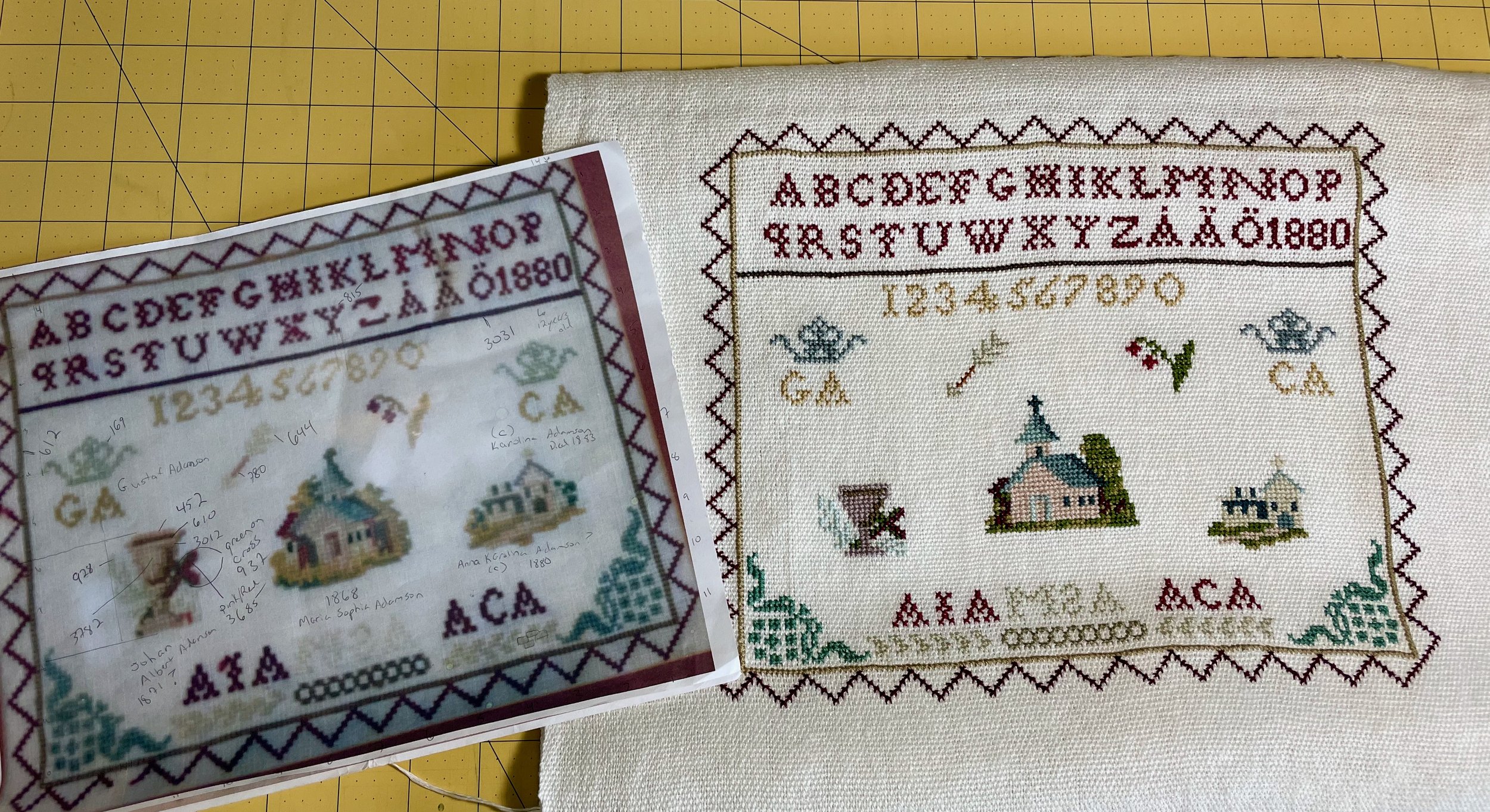Preparations for our move are well into motion. My studio for the most part is packed. I’ve given a lot of thought about the move and what it might offer my work. I’m embracing the limitations of space, materials and techniques that will be available to me as we transition. I’ve filled a large tote with a selection of hand dyed fabrics, handwovens, mini-iron and ironing mat. I’ll later add threads and other supplies so they will be ready for our move. Since we will be in temporary housing for an unknown amount of time, most of my materials are going to a storage unit. I’m trying to anticipate what I need and ultimately, if it isn’t accessible, then perhaps I don’t really need it after all. I had a colleague that would frequently say – “opportunities and challenges” when things got interesting at work. Perhaps those words will be the motto of this move.
I cut off the last pieces from my loaned loom before it gets returned to my mentor. Working ahead, I did some weaving using fabrics to make rag rugs, a common element to Nordic homes. Fabric was dear and you reused it as much as you can. I never imagined that I would love weaving rag rugs so much. It is such a tactile process and so satisfying to beat the rags into place. Thump, thump, thump!
Rag rug made out of hand dyed fabric that was disappointing as a fabric, but transformed well into a rug.
My thought is to use these pieces as a ground for my embroidery. The piece comes to my worktable already charged with a history connected to heritage, recycling, and the home. I experimented with different types of fabrics, mixing them into one piece, using them as elements to draw and to see what happens when a fabric is cut into strips and reassembled into a new form.
With each new idea and project, there is research that goes along with it. I picked up a copy of the book Finnish American Rag Rugs: Art, Tradition & Ethnic Continuity by Yvonne Lockwood a few months ago. It is a hefty source for information on the makers and keepers of traditions. I also found a documentary Finnish American Rag Rug Weavers https://upnorthfilms.com/product/finnish-american-rag-rug-weavers/ was made on the subject by Up North Films and I’m eagerly awaiting my copy.
Insert drawing rug here or book here.
Work in progress - hand dyed fabric and drawing a line
Now to write the hard part. Last Sunday we lost our greyhound, Sam.
Sam (racing name Samurai Drive)
November 9, 2008 - February 13, 2022
Sam has been a character in life, in my social media posts and in stories that would tell friends since we adopted him in the fall of 2013. He was such a naughty wonderful dog. He retired from racing at almost five. He had to be taught how to be a dog, to go up and down stairs, about windows and glass doors.
He survived separation anxiety, seizures, and a stomach ulcer. We survived his destructiveness with separation anxiety with some loss – an out-of-print mathematics book, a Lebanese cookbook (also out of print) and a book about sheep (would you believe, out of print?). I still do not understand how he got ahold of these books. All of them were on bookshelves in various places in the house and those shelves were packed with books. How did he remove them?! There was also the two-week-old iPhone that he stripped down. The Apple store kids could not believe it and many photos were taken to be shared. I unfortunately did not take one for my records.
Sam required a lot of care in managing his various medical needs. He made himself the center of attention and given his 80 lbs. size he often was the center. He insisted on laying on my feet at night and often stealing my quilt to lay on. He adored blankets and usually we would just give him the one we were using and find another one.
Sam’s loss wasn’t a big surprise. He was thirteen after all and a large dog. He was just diagnosed and treated for a liver infection and for the first time in a long time was feeling so good. The radiologist could not get over that he was thirteen – he didn’t look his age inside or outside. Sam had been slowly developing weakness in his back legs. We were managing it with medication, and last week he began to show signs of a limp with neurological linkage. On Sunday afternoon, the limp reappeared and over the course of a few hours he could barely stand or walk without assistance. It happened fast and we knew it was time.
Sleeping in the way of the loom.
It is always hard to lose a dog and I’ve taken Sam’s passing particularly hard. He spent much of his day with me in my studio. I learned to step over him in my comings and goings. The sound of his soft snores was the background noise in the house. I have moments when I forget for a minute that he isn’t here and start to look for him. Sam had so much life and love. The house just feels empty and still without him.











